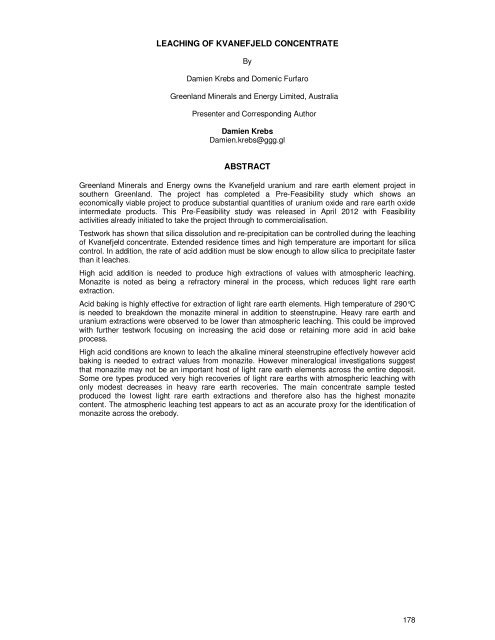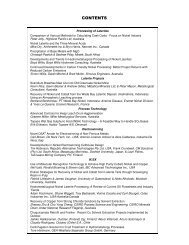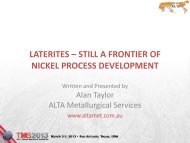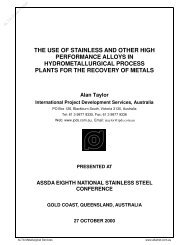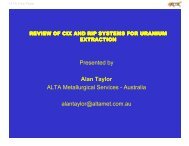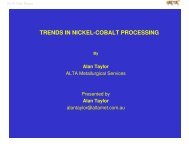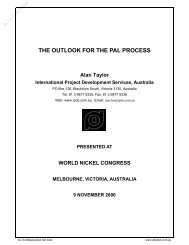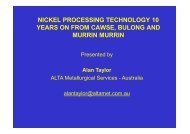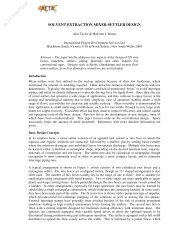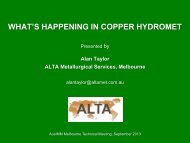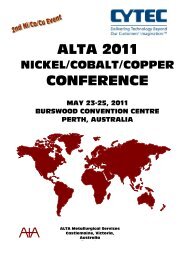Contents & Abstracts - ALTA Metallurgical Services
Contents & Abstracts - ALTA Metallurgical Services
Contents & Abstracts - ALTA Metallurgical Services
Create successful ePaper yourself
Turn your PDF publications into a flip-book with our unique Google optimized e-Paper software.
LEACHING OF KVANEFJELD CONCENTRATE<br />
By<br />
Damien Krebs and Domenic Furfaro<br />
Greenland Minerals and Energy Limited, Australia<br />
Presenter and Corresponding Author<br />
Damien Krebs<br />
Damien.krebs@ggg.gl<br />
ABSTRACT<br />
Greenland Minerals and Energy owns the Kvanefjeld uranium and rare earth element project in<br />
southern Greenland. The project has completed a Pre-Feasibility study which shows an<br />
economically viable project to produce substantial quantities of uranium oxide and rare earth oxide<br />
intermediate products. This Pre-Feasibility study was released in April 2012 with Feasibility<br />
activities already initiated to take the project through to commercialisation.<br />
Testwork has shown that silica dissolution and re-precipitation can be controlled during the leaching<br />
of Kvanefjeld concentrate. Extended residence times and high temperature are important for silica<br />
control. In addition, the rate of acid addition must be slow enough to allow silica to precipitate faster<br />
than it leaches.<br />
High acid addition is needed to produce high extractions of values with atmospheric leaching.<br />
Monazite is noted as being a refractory mineral in the process, which reduces light rare earth<br />
extraction.<br />
Acid baking is highly effective for extraction of light rare earth elements. High temperature of 290°C<br />
is needed to breakdown the monazite mineral in addition to steenstrupine. Heavy rare earth and<br />
uranium extractions were observed to be lower than atmospheric leaching. This could be improved<br />
with further testwork focusing on increasing the acid dose or retaining more acid in acid bake<br />
process.<br />
High acid conditions are known to leach the alkaline mineral steenstrupine effectively however acid<br />
baking is needed to extract values from monazite. However mineralogical investigations suggest<br />
that monazite may not be an important host of light rare earth elements across the entire deposit.<br />
Some ore types produced very high recoveries of light rare earths with atmospheric leaching with<br />
only modest decreases in heavy rare earth recoveries. The main concentrate sample tested<br />
produced the lowest light rare earth extractions and therefore also has the highest monazite<br />
content. The atmospheric leaching test appears to act as an accurate proxy for the identification of<br />
monazite across the orebody.<br />
178


